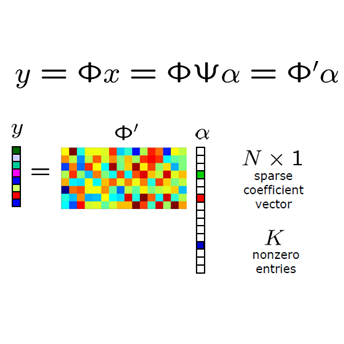We first propose a novel criterion that guarantees that an $s$-sparse signal is the local minimizer of the $\ell_1/\ell_2$ objective; our criterion is interpretable and useful in practice. We also give the first uniform recovery condition using a geometric characterization of the null space of the measurement matrix, and show that this condition is easily satisfied for a class of random matrices. We also present analysis on the robustness of the procedure when noise pollutes data. Numerical experiments are provided that compare $\ell_1/\ell_2$ with some other popular non-convex methods in compressed sensing. Finally, we propose a novel initialization approach to accelerate the numerical optimization procedure. We call this initialization approach \emph{support selection}, and we demonstrate that it empirically improves the performance of existing $\ell_1/\ell_2$ algorithms.
翻译:我们首先提出一个新的标准, 保证美元失序信号是 $\ ell_ 1/\ ell_ 2$ 目标的本地最小化器; 我们的标准是可解释的, 在实践中是有用的。 我们还使用测量矩阵空格的几何特性给出第一个统一的恢复条件, 并显示对于某类随机矩阵来说, 这个条件很容易得到满足。 我们还对噪音污染数据时的程序是否可靠进行了分析。 提供了数值实验, 将$\ ell_ 1/\ ell_ 2$ 与压缩感测中其他流行的非电解码方法进行比较。 最后, 我们提出了一个新的初始化方法, 以加速数字优化程序。 我们称之为初始化方法 \ emph{ 支持选择, 我们证明它从经验上改善了现有的 $\ 1/\ ell_ 2$ 算法的性能 。



